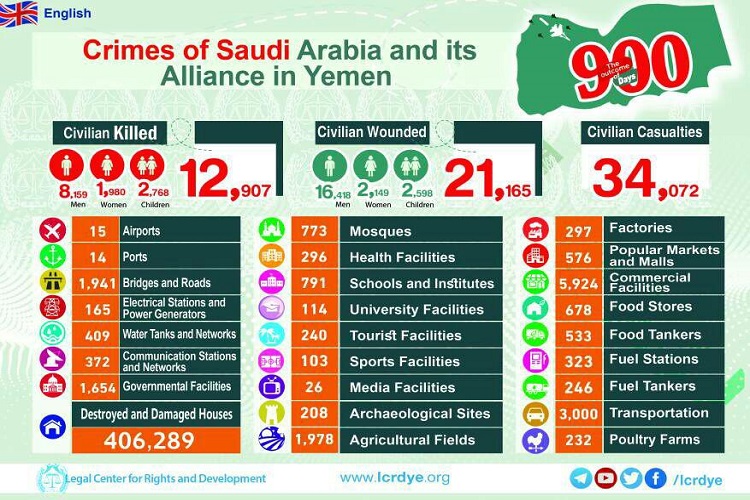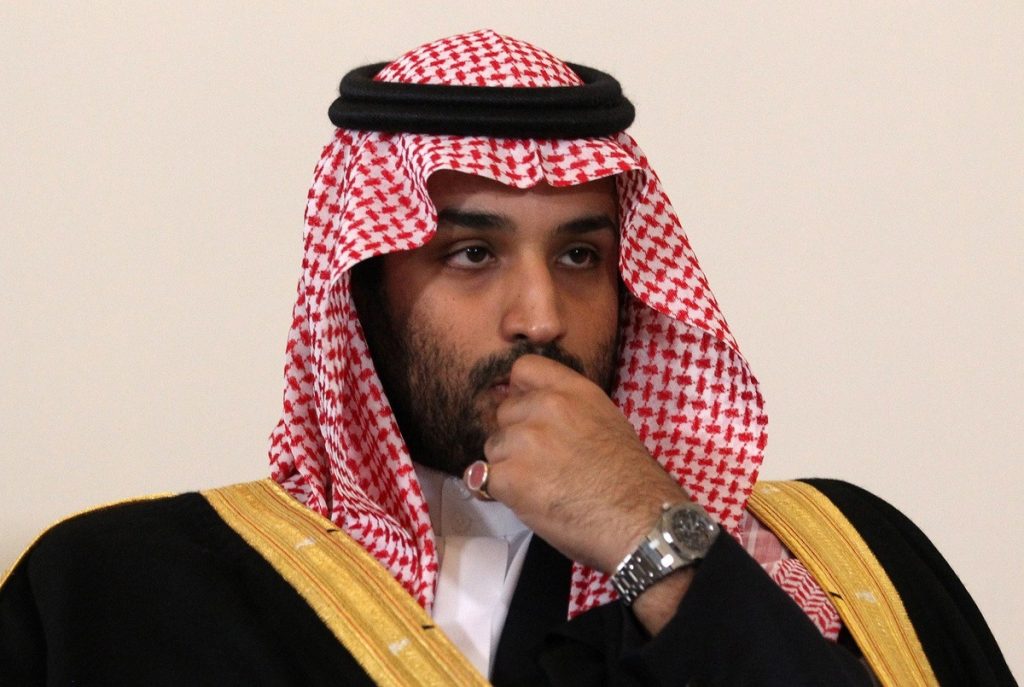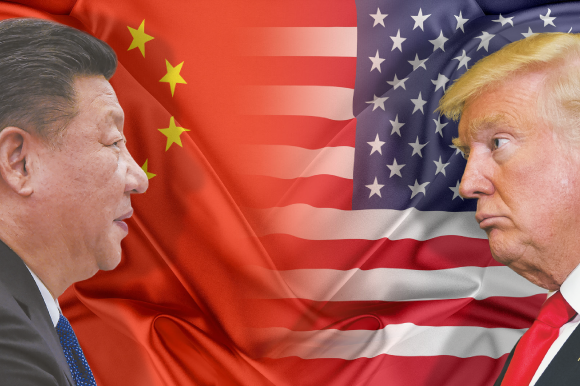In showing numerous instances of concordance and amity among Muslims and Sikhs that occurred during the Mughal era, Prof Dalip Singh’s Sikh history differs from the trend of Mughal/Musalman-bashing characterizing most of Mughal-Sikh Orientalist historiography. During the Mughal rule, ordinary Sikhs and Muslims as well as their leaders endeavored to maintain peaceful coexistence between these two communities of faith.
However, it cannot be denied that there were conflicts that occurred between the Sikh Gurus and the Mughal rulers who were contemporaneous with the former. Prof Dalip Singh took a novel approach in looking at these conflicts as caused not by religious commitment of the Mughal bureaucracy to Islam but primarily caused by political and pragmatic State concerns.
This article is an evaluation, rejoinder, and analysis of Prof Dalip Singh’s views regarding the tolerant nature of Sikh and Muslim relations in Mughal India by analyzing the conflicts that transpired during this particular timeframe and by determining whether the conflicts that occurred between the two communities were mainly due to religious reasons as alleged by Orientalists or due rather to political, economic, and pragmatic exigencies and State considerations.
By recovering and highlighting the various historical instances of Muslim-Sikh rapprochement that existed in medieval Mughal India, the article endeavors to promote a culture of dialogue and mutual respect between these two faith-traditions based on their shared history of amity.
Introduction: Context and Commitment of the Article
Prof Dalip Singh—an eminent academic authority on Sikh Studies, senior-researcher of Sikh Research and Education Center (SREC) based in Chesterfield, Missouri, USA—had written six voluminous books as well as numerous scholarly articles on the history, philosophy, and theology of Sikhism. His books are veritable sources of information on the history of Sikhism and the dynamics of the relationship between Sikh and Muslim citizens during the Mughal Empire’s era of ascendancy in India. These books are very helpful resources in the presentation of the flow of events describing the relations between the ten Gurus of Sikhism and the Mughal emperors contemporaneous with these Gurus.

Guru Nanak with Bhai Bala and Bhai Mardana and Sikh Gurus (Source: Wikimedia Commons)
The rise of Mughal rule directly coincided with the flourishing of the spiritual ministry of Guru Nanak, the founder of the Sikh faith and the subsequent ministries of the nine Sikh Gurus succeeding him. Utilizing Prof Dalip Singh’s books as bases of reference, I will evaluate and analyze his views regarding the dynamics of Sikh and Muslim relations in Mughal India by highlighting and analyzing the conflicts that transpired during this particular time-frame and determine whether the conflicts that occurred between the two communities—namely Sikh and Muslims—were mainly due to religious reasons or due rather to political, economic, and pragmatic exigencies of the time.
The Historical Milieu of the Sikh Gurus’ Relations with the Mughal Emperors
The founder of Sikhism, Guru Nanak (1469-1539 CE) had witnessed the defeat of the Turkic Lodhi rulers of Delhi and the rise of the Mughal regime under the leadership of the descendant of Timur, the victorious Babar Padshah. The defeated Turkic Lodhi rulers and the Mughal victors were professing Sunni Muslims. Both camps were related by bloodline to the great Turko-Mongol clan of conquerors (the Al-Khanids and the Timurids) who ruled Middle East, Central Asia, and North India.
The change of rulership in the throne of Delhi—from the Lodhi dynasty to the new Timurid-Mughal conqueror, Babar—established more firmly the hegemonic hold of Sunni Islam in the Indian Subcontinent. The tenth and last Guru of the Sikhs, Gobind Singh (1675-1708 CE) struggled against the ultra-orthodox Mughal Emperor Aurangzeb. Guru Gobind Singh fought Aurangzeb on egalitarian principles, and not because of religious differences between them. This conflict was triggered by the emperor’s apparent partiality and favoritism towards Muslims at the expense of his Hindu and Sikh subjects. While struggling against the oppressive and elitist policies of the Mughals, the Sikh Gurus also fought against the caste-ridden and discriminatory social practices of medieval Hinduism. This, in a gist, is the historical milieu and framework of the development of Sikhism as an egalitarian religio-philosophical faith.
Brahminic “Historical Myths” Purporting to Divide Sikhs and Muslims in Mughal India
Reading Prof Dalip Singh’s books, I noticed the objectivity of his historical descriptions regarding the relations between the Sikh Gurus and the Mughal Muslim rulers. Prof Singh identified what he calls “Orientalist and Brahminic historical concoctions” regarding many alleged events that transpired between the Sikh Gurus and the Mughal rulers [See, Dalip Singh, Eight Divine Guru Jots (Light).
Chesterfield, Missouri: Sikh Research and Educational Center, 2004; pp. 180-181]. Such historical myths purport to enlarge and blow out of proportion the Muslim-Sikh conflicts. According to Prof Dalip Singh, Brahmin historians who were schooled in the Orientalism that was in vogue among British and continental European universities and who were intensely opposed to the egalitarian and monotheistic message of Sikhism “concocted” these historical myths. Moreover, these “Orientalist and Brahminic historical concoctions” have adverse effects on the harmonious relations between Sikh and Muslim communities [Ibid., pp. 182-197].
Prof Singh’s aim in re-evaluating Sikhism’s history is to sort-out, reject, and dismiss “myths” that tend to destroy the cordial and concordant relations between Muslims and Sikhs in medieval Mughal India. Take for example his strong denial of the popular story propagated by Brahmin historians (a story that is unfortunately believed by most Sikhs as factual history) that a Pathan mercenary under the order of Emperor Bahadur Shah martyred Guru Gobind Singh. Prof Singh utilized more than one-sixth of the total pages of his book, Life of Guru Gobind Singh to prove that the story is an “Orientalist and Brahminic concoction” intended to sow discord among Muslims and Sikhs.
He analyzed the factual events surrounding the last eighty days prior to the assault of Guru Gobind Singh’s life to show that the story is a total fabrication. Likewise, he also narrated the harmonious, amicable, fraternal, and friendly relations that existed between the Mughal emperor Bahadur Shah and Guru Gobind Singh [Cf. Dalip Singh, Life of Sri Guru Gobind Singh Ji. Chesterfield, Missouri: Sikh Research and Educational Center, 2002; pp. 312-336]. He showed that Guru Gobind Singh and Emperor Bahadur Shah (Prince Shah Alam before his coronation) developed close friendship right at the start of the latter’s enthronement to the Mughal throne. The emperor was a well-wisher of the Guru who offered the Guru a Mughal robe of honor symbolizing imperial camaraderie and royal favor. Bahadur Shah even assured the free movement of the Guru throughout the whole breadth of Mughal territories. Furthermore, the emperor issued a firman (edict) guaranteeing the safety of the Guru and his disciples during the whole duration of his reign [Ibid., pp. 289-291, 302-304].
It appears that Wazir Khan of Sirhind was the mastermind of the Guru’s murder. Wazir Khan sensing the Guru’s closeness with the emperor had been sending hit men and spies to find opportunity to murder the Guru. Wazir Khan was afraid that the Guru—who was now a very close friend of Emperor Bahadur Shah—would settle scores with him as retaliation for the former’s murder of the Guru’s sons [Ibid., pp. 328-331]. According to Prof Dalip Singh, the Pathan and his assistant before they were killed in an encounter with the Sikhs, directly confessed that it was Wazir Khan who deputed them to murder Guru Gobind Singh. Emperor Bahadur Shah, who was at that time in Maharashtra—hearing of the murderous assault on the Guru’s life—right away dispatched his surgeon (an Englishman named Mr. Cole) to treat the Guru’s wounds. Furthermore, the emperor issued immediately a strong directive to round-up the 700 Pathans in the immediate vicinity where the crime was committed; as they may have harbored the Pathan assassin and his assistant. Guru Gobind Singh asked the Emperor not to do so since that act would entail punishing the innocents who may not be directly or indirectly involved in the reprehensible act [Ibid., pp. 329-330].
It is not my aim to prove whether Prof Dalip Singh’s abovementioned assessment regarding the historical circumstances surrounding the death of Guru Gobind Singh is correct or not. My purpose in narrating the above historical analysis is to show the commendable efforts of Prof Singh in removing and weeding-out what he termed as “Orientalist-Brahminic historical concoctions” that may unduly affect an objective and just appraisal of Muslim-Sikh history during the Mughal era. Such gestures of fairness coming from a Sikh historian are indeed praiseworthy since there is no dearth of history books that exaggerate unhistorical polemics against the Mughal rulers. As I see it, Prof Singh set the tone of historical factualness and unbiased objective research by removing many unfounded and propagandistic misinformation regarding the Sikh Gurus’ relationship with the Mughal emperors.
Cordial and Harmonious Relations between Sikhism and Islam during the Mughal Era
Prof Singh noted various conflicts between Muslims and Sikhs and between the Gurus and the Mughal royalty. Nevertheless, he also emphasized that Muslims, particularly the Sufis, and their disciples (i.e., the ordinary Muslim masses), reached out and helped the Gurus in performing pious activities, in proclaiming the doctrine of monotheism, and in declaring the egalitarian message of liberation from caste inequities. For instance, Bhai Mardana, a Muslim musician, assisted and served Guru Nanak from the start of his ministry until the Guru’s demise [See, Dalip Singh, Life of Guru Nanak Dev Ji and His Teachings. Chesterfield, Missouri: Sikh Research and Educational Center, 2004; pp. 33-36].
The Sunni-Sufi saint, Hazrat Mian Mir maintained fraternal friendship with Guru Arjan and remained constantly by the latter’s side all throughout the period of the Guru’s imprisonment and eventual martyrdom. Hazrat Mian Mir successfully achieved rapprochement between the Emperor Jahangir and Guru Hargobind [See, Eight Divine Guru Jots (Light), op.cit. pp. 178-179, 213]. It is also interesting to mention that it was Hazrat Mian Mir—who was a Muslim saint and not a Sikh for that matter, who laid the chief cornerstone of the holiest Sikh shrine, the Harmandir Sahib (the Shrine of the One God) in Amritsar, Punjab. Furthermore, the sacred scripture of Sikhism, Shri Aadi Guru Granth Sahib, contains numerous hymns and spiritual poetry composed by Muslim saints, poets, and bards [Ibid., pp. 179-180]. The above facts show not only the tolerant and all-inclusive nature of Sikhism but likewise, these facts provided historical instantiations of the deep friendship and goodwill that existed between the religious leaders of both communities.
Likewise, in the lifetime of Guru Gobind Singh, many Muslim awliya (Sufi saints) enlisted themselves as the Guru’s well-wishers, as example take the case of Sayyed Bhikha Shah who consecrated the Guru during the latter’s infancy and foretold of the Guru’s future spiritual greatness [Life of Sri Guru Gobind Singh Ji, op.cit., pp. 30-31]. Pious Muslims like Pir Budhu Shah and his followers wholeheartedly helped the Guru to the extent that Pir Budhu Shah sacrificed his sons to defend Guru Gobind Singh from the armed attacks of the Hindu pahari-rajas (hill-chieftains) of Himachal [Ibid., pp. 190-192]. The Muslim soldiers, Nabi Khan and Ghani Khan as well as the Sunni saint, Hazrat Sayyid Muhammad Nurpuri, helped Guru Gobind Singh escape the mercenaries of Wazir Khan, the governor of Sirhind [Ibid., pp. 227-230].
These historical facts, and many more, were narrated to emphasize that a broad section of Muslims from the saintly class (Sufi sheikhs), the Mughal soldiers, mystical poets, as well as ordinary Muslims, enthusiastically aided the Sikh Gurus in their noble cause for a tolerant, caste-free, and egalitarian India. Furthermore, these narrations show that there were numerous instances of amity, concord, and friendship between the Sikh Gurus and their followers, and the Muslim Sufi saints and their disciples (i.e., the ordinary Muslim masses).
Not Islamic Doctrines Per se but Mughal Discriminatory Policies that Caused Sikh-Mughal Conflicts
Prof Dalip Singh brings home two very important points in his analysis of Sikh-Muslim relations in medieval India. Firstly, the conflicts between the Sikh Gurus and the Mughal emperors were brought about by the Mughal’s elitist and discriminatory policies towards non-Muslims. Secondly, the caste-oriented Brahmins who detested Sikhism’s egalitarian ideology, and who were firmly opposed to Sikhism’s cutting criticisms of Hindu idolatry, ritualism, and casteism, oftentimes fan the Mughal emperor’s conflict with the Sikh Gurus [Eight Divine Guru Jots (Light), op.cit. pp. 16-24]. Prof Singh also brings into the fore the part played by obscurantist, casteist, divisive and communalist Brahmins in fomenting conflicts between Sikhs and Muslims. He identified the role of Brahminic machinations in creating divisions between these two egalitarian religions. Unfortunately, most Sikh histories fail to show the Brahminic instigations in the Sikh-Muslim conflicts. Prof Singh stands out in contrast with other historians in his emphasis that most of the troubles that were experienced by the Gurus were not only due to the oppression of the Mughal Padshahs (Emperors) but also due to the plots of upper caste Hindus who were fearful of the teachings of the Gurus against casteism. These Brahmins slandered the Gurus before the Mughal authorities [Ibid., p. 209-ff].

Baba Sri Chand Ji’s statue. Sculpture by Amrit Singh Khalsa (Source: Sikhi Wiki)
Prof Singh enumerated many examples of Brahmin machinations against the Gurus. The immediate successor of Nanak, Guru Angad, suffered from the disruptive plots of Brahmins who wanted him removed from the “guruship” for his spirited campaign against the caste system [Ibid., pp. 13-17]. According to Prof Singh, there were Brahmins who aggressively supported the Udassi sect of Guru Nanak’s ascetic son, Baba Sri Chand in order to create division among the Sikhs at the crucial time when the infant Sikh community suffered bereavement during the demise of Guru Nanak [Ibid., pp. 17-19]. Similarly, a yogi-ascetic by the name of Shiv Nath Tapa—in collusion with local Brahmins—jealous of the rising popularity of Guru Angad among the masses; and envious of the general acceptance among the ordinary people of the Guru’s institution of casteless dining (Guru ka langar), vehemently endeavored to remove the Guru from preaching his doctrine of pristine monotheism and social egalitarianism in the town of Khadur and other outskirt areas [Ibid., pp. 22-24]. Likewise, Chandu, the person who is responsible for the martyrdom of the fifth Guru Arjan; Pandit Krishan Lal who vehemently opposed the preaching of the eighth Guru Harkrishan; the upper-class Brahmins and hill-chieftains (pahari rajas)—these are not Muslims. These are all Hindus who intensely opposed the Sikh Gurus and caused them much suffering [Ibid., pp. 13-24, 209, 177-178, 312-313; See also, Life of Sri Guru Gobind Singh Ji, op.cit. pp. 166-177].
Sikhism’s Concept of Righteous Warfare Compared with Islam’s View of a Just Struggle (Jihad)

A kirpan (top) and its sheath – a sword or knife carried by Sikhs (Source: Wikimedia Commons)
Prof Dalip Singh explained at length the full significance and the metaphorical symbolism of the sword that Guru Gobind Singh required for devout Sikhs to perpetually carry in their person. The sword signifies the righteous authority of the One God [See, Dalip Singh, Sword: Symbol of Divine Authority. Chesterfield, Missouri: Sikh Research and Educational Center, 2002; pp. 45-52, 97-98]. It further signifies the ideal way of life for Sikhs, viz, that true Sikhs should be submissive to the divine authority of God in the service of truth, integrity, human dignity, and justice even to the point of martyrdom (shahadat) [Ibid., pp. 53-64]. The Sikh sword is not meant for its wielder to aspire for brute power and wealth—it is to be utilized for seva (service): service and submission to God’s authority, service to the Khalsa or Sikh community, and service to the whole of humanity.
This is the full religious significance of the sword in Sikhism. All the Sikh Gurus strongly detest and explicitly forbid aggressive warfare; i.e., warfare for the sake of power grabbing and warfare that involves massacre of innocent non-combatants [Ibid., p. 54]. Therefore, those wars entered-to by Sikhs that contravene the regulative principles laid down by the Gurus were devoid of religious legitimacy because such wars run counter to the Sikh tenets concerning righteous warfare (dharam yuddh). Thus, Sikhism should not be blamed for wars waged by Sikhs that go against the regulative directives set forth by the Sikh Gurus [Ibid., pp. 55-56].
As of this juncture, let me say that the Sikh teaching on defensive warfare is in perfect consonance with what Islam taught regarding jihad. When Prophet Muhammad sanctioned the use of the sword in a righteous struggle, he solemnly warned the Muslims that the sword is to be used only as the last resort and in self-defense for the sake of truth, justice, and humanity so that there will be no oppression and persecution that will overwhelm the Islamic community [Al-Qur-an 22:39; 2:190,193; 8:61]. Maulana Muhammad Ali Lahori, an eminent scholar in Quranic exegesis (tafseer Qur’aniyyah), in commenting and in summarizing the above pertinent passages in the Al Qur-an related to jihad says unequivocally that these passages explicitly proscribed and condemned in clear and certain terms aggressive warfare in the name of religion.
Even defensive warfare has Shar’i (Qur-anic) regulative principles characterized by fairness and humaneness to the enemy combatants. In no way are non-combatant civilians be included in a defensive warfare. Maulana Muhammad Ali exhorted Muslims to pay special care and attention to the Shar’i conditions laid down by the Qur-an and Sunnah (practice of the Prophet) concerning legitimate and defensive warfare [See, Maulana Muhammad Ali, The Holy Qur-an: Translation and Commentary. Columbus, Ohio: Ahmadiyya Anjuman Ishaat Islam Lahore Press, op.cit., 1998]. Warfare in the perspective of Islam and Sikhism is only utilized as the last resort for the defensive protection of the oppressed from the arrogant oppressors. Both religions believe that the sword is never intended for offensive or aggressive warfare. Defense for the rights and dignity of the human person is the only reason for drawing the sword—and only as the last recourse. Islam and Sikhism do not condone force and compulsion—both faiths stand for peace, tolerance, and amity [See Maulana Muhammad Ali Lahori, The Religion of Islam. Columbus, Ohio: Ahmadiyya Anjuman Ishaat Islam Lahore, USA Inc., 1990; pp. 405-443]. Islam however provides for the just defense of ones’ faith, life, and property. In the same vein, the sixth Guru, Hargobind and tenth Guru, Gobind Singh (as the last preceptor of Sikh lineage of spiritual masters) provided for defensive struggle against oppression (but not aggressive war) in their act of arming the Sikhs with sword.
I strongly believe that the parallel and analogous teaching of both Sikhism and Islam regarding just, defensive, and righteous warfare can be positively harnessed and be efficiently utilized as collaborative venues for interfaith dialogue between these two religions. Furthermore, interfaith dialogue on the nature of what constitutes just warfare in Sikhism and in Islam can be effective settings for mutual forgiveness and reconciliation of historical animosities between Sikhs and Muslims since both communities will be able to reflect and analyze for themselves that the numerous wars that they waged against each other in the past did not have any religious warrants or justifications—and therefore the raison d ’etre in many of these past wars were only for greed and thirst for power, and thus devoid of spiritual significance.
Not the Islamic Shariah Per se but Political Pragmatism and Discriminative Policies of Mughal Bureaucracy that Persecuted and Oppressed the Sikhs
Prof Dalip Singh did not hesitate to narrate the grave injustices perpetrated by the Mughal Padshahs to the Sikhs and to their Gurus; but I truly marvel at the proper balance and intellectual prudence shown in Prof Singh’s nuanced analysis of the actuations of the Mughal Sultans vis-à-vis Sikhs. Let us take the example of Emperor Aurangzeb. His decisions were always affected by pragmatic considerations of appeasing bigoted Muslims and Hindus who constantly flattered him in his royal durbar (court). Prof Singh argued that Aurangzeb’s decisions were not specifically dictated by his commitment to Islamic Sunni orthodoxy; rather they were largely dictated by political pragmatism. He pointed out that during the ministry of Guru Harkrishan, the Sikh masands (feudal overlords) and the rival claimant to guruship, Ram Raie should be equally pointed out as among those who greatly persecuted the Guru and caused him much distress. They were the ones who presented their case to Aurangzeb and instigated the emperor to persecute Guru Harkrishan. The Sikh masands further appealed to the emperor to make Ram Raie the Guru instead of Harkrishan. In short, Emperor Aurangzeb’s commitment to orthodox Sunni Islam did not have anything to do with his decision to imprison by house arrest Guru Harkrishan; rather it was Aurangzeb’s political and pragmatic move to please and to win-over to his side the rebellious Sikh masands and the rival claimant to the guruship, Ram Raie [See, Eight Guru Jots (Light), op.cit., pp. 307-320].
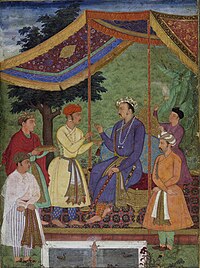
Emperor Jahangir receiving his two sons, Khusrau and Parviz, an album-painting in gouache on paper, c. 1605-06 (Source: Wikimedia Commons)
Prof Singh deeply disagreed with most Sikh historians in their allegation that Guru Arjan was martyred because he committed treason against the reign of Emperor Jahangir by supporting the rebellion of Prince Khusro (the ill-fated son of Jahangir). Prof Singh reasoned that Guru Arjan was a peacemaker as shown in all his religious writings. In these writings, he exhorted the Sikhs to live in amity with everyone and to abide by the laws of the land. The Guru was a staunch advocate of inter-religious harmony as shown in the material as well as spiritual help that he accorded with impartiality to the needy Hindu, Muslim, and Sikh masses [Ibid., pp.169-203]. Given these facts, it would be unthinkable that Guru Arjan supported the rebellion of Khusro.
Prof Singh also opposed the allegation that Guru Arjan was penalized for rebellion, which in the Mughal times was public execution, according to the Shariah law [Ibid., pp. 184-185]. He argues—and I believe, rightly so—that in the Mughal era, penal provisions in the Shariahlaw was not applied to persons who are not Muslims. Legally speaking, Shariah is defined as “the entire law and regulations taken or inferred from Divine Revelation (Qur-an) and Prophetic Traditions (Sunnah) governing Muslims in their individual and collective lives as Muslims from the cradle to the grave (sic)” [See, Bayazid Kurdi Shafii, Shari Kya Hain? (What is Shariah?). Peshawar: Kitabistan Fiqhiyyah, 1979; pp. 50-53. Emphasis and italics, mine. See also, Huseyin Hilmi Işik, Seadet Ibadiyye (Endless Bliss) Volume 3. Istanbul: Wakf Ihlas Gazetçelik, 1980; pp. 57-69]. The Mughal rulers enforced the Shariah Law solely on the Muslim subjects and not to the kufurat (unbelievers), a technical term for non-Muslims [Cf., Ahmet Tuluykan, Kitab-e Dowleh Islamiyeh (Book of Islamic Treasuries). Kutahya, Turkey: Ruhani Sohbetleri, 1942; pp. 34-47]. It is therefore erroneous to claim that Guru Arjan, a non-Muslim, was punished according to the mandates of the Shariah. The Mughal officers in Lahore murdered the Guru, under the instigation of Chandu, a Hindu who was jealous of the Guru’s fame. The Guru’s martyrdom was also due to the slanders and intrigues of fundamentalist bigots (both Muslims and Hindus) in the court of Emperor Jahangir who for pragmatic reasons to remain in power, approved of the Guru’s execution; and never because of the Islamic Law (Shariah), which solely governed the life of Muslims.
I must admit that both Mughal royal chronicles, Tuzukh-e-Jahangiri and Tuzukh-e-Alamgiri narrated that the executions meted to both Guru Arjan and Guru Tegh Bahadur were punishments for propagating a different religion in contradistinction to Islam; however I cannot belittle the fact that the clear provision stipulated by preeminent fiqh (Islamic jurisprudence) scholars like Hazrat Imam Abu Hanifa concerning the jurisdiction of the Shariah clearly stands out—that non-Muslims (kafir) cannot be punished on account of Muslim Law since the Shariah, as explained by the four Imams of Sunni fiqh governs only the Islamic Ummah (community of believers).
To properly understand Emperor Jahangir’s verdict of putting to death Guru Arjan and whether such an order was based on Shariah considerations, it is relevant to provide direct quote from the Tuzukh-e-Jahangiri, which was Jahangir’s own personal memoir. The Tuzukh states:
In Goindwal, which is on the bank of river Beas, there was a Hindu named Arjan. Masquerading in the mantle of sanctity and piety, to the extent that he had lured many from the simpletons among the Hindus, and even from the unwary and dumb adherents of Islam, by his conduct and pretensions; and they had trumpeted far and wide his supposed holiness. They called him Master, and from every corner, ignorant hoi polloi crowded to venerate and place their trust in him. For approximately three or four generations, their business is becoming popular among the dimwitted masses. I therefore intend to put a stop to this vain affair and bring him to Islam, the right path [Kareem Maksod Zishan, Tuzukh-i-Jahangiri: Literal Translation with Chronological Introduction. Chittagong, Bangladesh: Bangla Institute of South Asian Studies, 1965; p. 144].
The abovementioned quote is the only text in the Tuzukh that directly mentioned Guru Arjan and his religious activities. In the above text, Jahangir definitely identified the Guru by his name, Arjan. This text did not say anything to conclusively prove that Emperor Jahangir commanded the execution of Guru Arjan using the Shariah Law as the legal basis. I must stress that this particular quote from the Mughal royal chronicle, Tuzukh-e-Jahangiri did not support the allegation that the execution meted to Guru Arjan was punishment for propagating a different religion in contradistinction to Islam. The above text only shows Emperor Jahangir’s animosity towards Guru Arjan. The text however showed that Jahangir, in order to put an “Islamic sense or flavor” to his animosities against Guru Arjan, expressly stated that he wanted to “bring him [i.e., the Guru] to Islam”—i.e., the Emperor intended to convert the Guru to the Islamic faith [Ibid].
It must be clearly reiterated that even if one argues that Emperor Jahangir invoked the penal code of the Shariah as the legal basis in putting Guru Arjan to death (a point that the Tuzukh did not assert); still, one must not forget the fact that the clear provision stipulated by preeminent fiqh (Islamic jurisprudence) scholars like Hazrat Imam Abu Hanifa concerning the jurisdiction of the Shariah still clearly stands out—that non-Muslims (kafir) cannot be punished on account of Muslim Law since the Shariah, as explained by the four Imams of Sunni fiqhgoverns only the Islamic Ummah (community of believers). Punishing a non-Muslim by appealing to the Shariah is at best misguided and erroneous if one adheres faithfully to the clear pronouncement of Hazrat Imam Abu Hanifa as to the non-inclusion of kafirs from the domains of Shariah jurisdiction [Cf., Huseyin Hilmi Işik, Seadet Ibadiyye (Endless Bliss) Volume 3, op. cit., p. 59. See also Bayazid Kurdi Shafii, Shari Kya Hain? (What is Shariah?), op. cit., p. 53].
It should be borne in mind that the Islam which spread in Mughal Northern India, and adhered to by the ulama (religious functionaries) in Mughal court is the Sunni Hanafi school of fiqh. If these ulama prescribed Shar’i penalty to execute both Guru Arjan and Guru Tegh Bahadur, these ulama were declaring something contrary to Islamic Law—their ruling (fatwa) can be considered null and void from the very beginning. Thus, it appears to me that the Mughal emperors Jahangir and Aurangzeb outwardly feigned allegiance to Islam by publicly executing the Gurus Arjan and Tegh Bahadur, and allowed their respective chroniclers to write that the Gurus were executed for propagating a different religion. All the above measures were done by the Mughal emperor for propagandistic agenda; to placate and appease the rising ultra-orthodox Naqshbandi ulama whose influence were steadily growing in the Mughal durbar as shown in the meteoric rise of Hazrat Imam Rabbani Ahmad Sirhindi whose spiritual mastership (Pir-Mureedi) was acknowledged and sought-after by many ashraf (Central Asian Turks) nobles in the courts of both Jahangir and Aurangzeb [Cf. Eight Guru Jots (Light), op.cit., pp. 184-190].
If the Islamic Shariah was not supposed to be the legal corpus used in giving capital punishment to non-Muslims (kufurat) since technically the Shariah was to be exclusively and solely applied to Muslims, then what punitive law did the Mughal Emperors use in penalizing non-Muslims, in particular the martyred Gurus Arjan and Tegh Bahadur? This question will be tackled in the next subsection.
The Mughal Rule was not an Islamic State in terms of Shariah Specifications but an Empire Governed by Turko-Mongol Traditions and Conventions
To properly understand the Mughal policies in its dealings with Sikhism, it should be stressed that the Mughal Empire in India was never an Islamic State, nor was it intended to be a theocratic empire. Of course, I admit that within the Mughal administration, there were Sunni mullahs and Sufi mystics of varied persuasions and doctrines; in the same manner that there were also Hindu nobilities (i.e., the Rajputs) and Brahmin councilors. There were even agnostic philosophers in the officialdom of the Mughal emperors. Religious pluralism and multiculturalism existed in the Mughal court even during the reign of the ultra-orthodox Sunni Muslim Aurangzeb [See, Halid Rufa’i, Turkic and Mughal Governance: The Case of Ottoman and Timurid Sultanates. Istanbul: Khas Turk Publishers, 1973; pp. 145-147]. Objectively speaking, the Mughal Empire and its distant “cousin”, the Ottoman Sultanate in Turkey were pluralistic regimes. Yet there were times that orthodox Muslim nobles wanted to assert and were at times successful to some degree, in forcing the emperors to buy their own brand of Islamic fundamentalism.
As this was in the case of Aurangzeb’s reign (and to some extent during Jahangir’s rule) when the conservatist Naqshbandi order of Sufis headed by Hazrat Imam Rabbani Ahmad Sirhindi became influential in the Mughal court. In his spiritual letters, collectively known as, Maktubat, Hazrat Ahmad Sirhindi repeatedly complained that the Mughal bureaucracy was very lenient towards the practices of non-Muslims; by tolerating and even by encouraging them. He asked the Mughal nobles to exert their utmost efforts in compelling the Mughal Padshah to implement pro-Muslim political and economic policies. The ashraf nobles who aligned with Hazrat Ahmad Sirhindi were relatively successful in persuading Emperor Aurangzeb to establish semblance of orthodox Islamic rule during his reign [Cf. Halid Rufa’i, op. cit., pp. 147-149. See also, Haleem Sarwar Zia. Mujaddad alf Sani al Sirhindi and His Role in the Islamic Renaissance of Central Asia. Karachi, Pakistan: Maktab-i-Irfan wal Islamiyya, 1959; pp. 225-226]. Nevertheless, in the general span of its existence, the Mughal Rule (likewise, the Osmanlı or Ottoman Rule in Turkey) was essentially pluralist, tolerant, cosmopolitan, and openly secular.
According to Dr Alp Aqaoğlu, a scholar of medieval Mongol-Turkic governance, the criminal and penal laws implemented in Mughal India were not based on the Qur-an and Shariah. The penalties inflicted by Mughals and Turks were not based on the Qur-an but on the customary “yasa-yarligh Chagtai Changgiz Khani” (i.e., traditional penal laws as practiced by Chughtai Turkic-Mongols and as inaugurated by Genghis Khan and his immediate successors) [See, Prof. Alp Aqaoğlu, Sirkarı Maghul ve Vilayetı Turk (The Rule of the Mughals and the Government of the Turks). Iznik, Turkey: Yeni Kutuphane, 1967; pp. 21-59].
Therefore, the relatively brutal punitive laws of Mughal India were rooted in the customary criminal laws of the Mongols (yarligh or yasa), and were never based on Islamic Shariah. Halil Inalçik, professor of ancient and medieval Turkish administrative systems likewise added that the Ottoman Sultans of Turkey and the Mughal Padshahs (Emperors) of India never intended to establish an “Islamic rule”—in the strictest signification of the term—during their periods of ascendancy. Both regimes established the millat or mazhab system of governance in their respective domains. This system entailed that all millat (cultural groups) or mazhabs (Urdu and Turkic term for religious communities) within the Ottoman (and Mughal) realm were autonomous and therefore, free to establish their own religious and communal laws in their respective territorial domains; provided that these millat give their allegiance to the Padshah, pay the tributary taxes as token acknowledgment of the Padshah’s sovereignty, and provided further that the customary laws of the respective millats did not challenge the authority of the Padshah or the religious sensibilities of the Muslim majority [Halil İnalçik, The Ottoman Empire: The Classical Age, 1300-1600. New York: Praeger Publishers, 1973; pp. 65-75, 89-118].
The preservation and expansion of their power in India were the overriding goals of the Mughal emperors. Their professed allegiance to Islam was likewise based on self-interest and political pragmatism, i.e., whether their allegiance to Islamic orthodoxy will conduce or add to their security of power and territorial expansion [See, L.S. Stavrianos, The Ottoman Empire.New York: Rinehart Press, 1957; pp. 8-31]. The Mughal Rule was never an Islamic rule in the strict Shariah meaning of the term; instead, the Mughals only pragmatically utilized Islam for their own political convenience. Even an eminent orthodox Naqshbandi Sufi Muslim saint like Hazrat Imam Rabbani Ahmad Sirhindi was likewise imprisoned by Emperor Jahangir when the former became critical of the policies of the latter; thus proving the contention that the Mughal Padshahs were moved not by bonafide Islamic zeal but by court intrigues and by pragmatic acts to ensure the maintenance of their power [Cf., Eight Divine Guru Jots, op.cit., pp. 137-139. See also Haleem Sarwar Zia. Mujaddad alf Sani al Sirhindi and His Role in the Islamic Renaissance of Central Asia, op.cit., pp. 225-226]. These facts further confirm and establish the contention that Guru Arjan never rebelled against the Shariah Law nor was he punished on account of the Islamic Law. His death was due to the intrigues sown by intolerant and bigoted religionists, both Muslims and Hindus; and not because of the Shariah penal code per’se.
Sikhism as an Independent, Monotheistic, and Egalitarian Religion and the Ever-present Danger of Hindu Assimilation Posed by Brahminic and Hinduttva Ideology on Contemporary Sikhism
Prof Dalip Singh showed in his writings the arduous and painstaking revolutionary efforts made by all Sikh Gurus starting from Guru Nanak down to Guru Gobind Singh to distinguish the Sikh Khalsa from Hinduism. The Gurus imbue the Sikhs with egalitarian ideals to contrast starkly the societal inequalities of caste-conscious Hinduism. Beginning with Guru Nanak’s denunciations of the evils of casteism and idolatry, continuing with Guru Angad’s institution of communal kitchen and congregational dining (Guru ka langar) to break down caste barriers, and culminating in Guru Gobind Singh’s formation of the democratic and casteless Khalsa (Sikh community)—all these instill in the Sikhs the ideals of fraternity, justice, and equality.
In their foresight, the Gurus of Sikhism insisted that the Sikhs are a distinct community. This insistence was made so that Sikhs will not be assimilated by the caste-ridden and idolatrous Hindu way of life, which were clearly against the Gurus’ egalitarian and monotheistic ideals. The Gurus knew the strength of the Brahministic sway in Indian culture and mentality. They knew that if Sikhs will not be vigilant, there is a grave danger that the prevalent ethos of Hinduism will water down the Sikh ideals of egalitarianism and staunch monotheism—thus making it another sect of Hinduism like what happened to other egalitarian and anti-caste religious movements of India in the past. It was the spiritual genius and progressive forethought of the Gurus that made possible the survival of Sikhism as an independent world religion. In his writings, Prof Dalip Singh alerted the Sikhs regarding the grave threat and the consequent danger of falling into the trap of Hindu assimilation and Brahminic syncretism [Dalip Singh, Eight Divine Guru Jots (Light). Chesterfield: Missouri: Sikh Research and Educational Center, 2004; pp. 137-139].
Looking at contemporary India’s track record vis-à-vis its policy of state secularism; pitted against the emergence of an extremely aggressive Hindu fundamentalism (Hinduttva) in present day India, and judging from current events, I can sadly say that during the last four decades, India failed miserably in implementing the lofty ideals of secularism. The destruction of the Golden Temple in Amritsar with Indira Gandhi’s persecutions of Sikhs in the 1980s; the destruction of Babri Masjid with the encouragement of the Hindu fundamentalist party, Bharatiya Janata Parishad in the 1990s; the killing of hundreds (if not thousands) of Muslims (i.e., Gujarat Carnage) in 2002; and the sporadic burning of Christian churches in Orissa and in places where Harijan Christians reside; these and many other instances show that the Brahminist communal forces are bent on making India a Hindu theocracy at the disastrous expense of the rights of other religious minorities. These turn of events were contrary to Mahatma Gandhi’s vision of a “truly pacifist, pluralist, tolerant, and secular India” [Daniel Birch and Ian Allen, Gandhi. San Francisco CA: Field Educational Publications; 1969; pp. 47]. As for India’s performance in honoring the Sikh’s right for autonomy after the Partition, my historical readings showed that India was not too conscientious in fulfilling most of its promises to the Sikhs. Judging from what I have seen in the militant resurgence of Hindu fundamentalism and Brahmin racism in present-day India, I feel that the Sikhs have to be very cautious regarding these recent developments, since the real dangers of cultural assimilation, marginalization, and ultimate cultural annihilation of the Sikhs are ever present, and pressures are being exerted by fundamentalist Brahmins to make Sikhism into another insignificant sect of disarrayed Hinduism.
Conclusion
Prof Dalip Singh’s research in Sikh history is unique since it puts a concordant perspective on the history of Muslim-Sikh relations in Mughal times without sacrificing historical facts. He was able to place a proper and balanced outlook to a very touchy issue in medieval Indian history. To write an objective and just appraisal of Sikh-Muslim relations coming from a Sikh scholar whose sole goal is to sincerely rectify historical mistakes for the sake of concord between the two communities, is indeed a very laudable accomplishment. Personally, I am very tired of reading lopsided Sikh history books that always portray Sikhs and Hindus as “bhai-bhai” (brothers) and the Muslims as their common “dushman” (enemies). Oftentimes, these biased books engage in Muslim bashing without giving due credit to a very concrete historical fact that there were hundreds, nay, thousands of ordinary Muslims (and many Muslim Sufi saints) who were on the side of the Gurus in their struggle against Mughal injustice, oppression, and tyranny.
Prof Dalip Singh amply recorded that there were many Muslims who, while remaining committed Muslims, were themselves true Sikhs (disciples) of the Gurus. These Sikhi-Muslims, as they were often called even laid their precious lives, the lives of their loved-ones, and their properties for the egalitarian cause of the Gurus. It is sad to see that many books on Sikh history only showed the sufferings of the Gurus in the hands of Mughal rulers, but failed to highlight the sinister treatments meted to the Gurus by the elitist, racist and caste-conscious Brahmins. I am therefore grateful to Prof Dalip Singh’s intellectual prudence, circumspect research, and objective treatment of historical facts. I truly admire his courageous and daring crusade of rectifying Sikh history and of exposing the myths propagated by historians who are infected by Brahminic propaganda to pit Sikhs against Muslims. Indeed, I found his views on Muslim-Sikh relations in the Mughal Era, to be more authentic, lucid, and conducive in producing a more harmonious, tolerant, and concordant rapport between the contemporary adherents of Islam and the Sikh faith.
A Brief Note on the Article
This article is an updated, detailed and expanded version of my conference paper which was first delivered in a lecture-forum entitled, “Hindu, Muslim, and Sikh Relations in Medieval Mughal India” held at Guru Nanak Sikh Temple, Martillo St., Marikina City, Philippines on July 02, 2008. Years before, the first seminal drafts of this paper were written with full concurrence and approval of Dr. Dalip Singh of Sikh Research and Educational Center based in Chesterfield, Missouri, USA. Prof Singh himself, through constant e-mail communications with the author of this paper, had thoroughly reviewed the draft and made valuable comments of its contents. In the same manner, I am extremely grateful to Prof. Dr. Devinder Singh Chahal, the present chair of the Institute for Understanding Sikhism (IUS) based in Quebec, Canada for his valuable critique and intellectual guidance in pointing-out parts of the paper that needs to be further reflected-upon, strengthened, or reconsidered from a different vantage point.
Prof. Henry Francis B. Espiritu is Associate Professor-VI of Philosophy and Asian Studies at the University of the Philippines (UP), Cebu City. He was former Academic Coordinator of the Political Science Program at UP Cebu from 2011-2014. He was also the former Coordinator of Gender and Development (GAD) Office at UP Cebu from 2015-2016. His research interests include Islamic Studies particularly Sunni jurisprudence, Islamic feminist discourses, Islam in interfaith dialogue initiatives, Islamic environmentalism, Classical Sunni Islamic pedagogy, the writings of Imam Al-Ghazali on pluralism and tolerance, Turkish Sufism, Muslim-Christian dialogue, Middle Eastern affairs, Peace Studies, Mughal Studies and Public Theology.
Sources
A.) Primary Sources:
Singh, Dalip. Eight Divine Guru Jots (Light). Chesterfield , Missouri : Sikh Research and Educational Center, 2004.
__________. Life of Sri Guru Gobind Singh Ji. Chesterfield , Missouri : Sikh Research and Educational Center, 2002.
__________. Life of Guru Nanak Dev Ji and His Teachings. Chesterfield , Missouri : Sikh Research and Educational Center, 2004.
__________. Sword: Symbol of Divine Authority. Chesterfield , Missouri : Sikh Research and Educational Center, 2002.
B. Secondary Sources:
Ali, Maulana Muhammad. The Holy Qur-an: Translation and Commentary. Columbus , Ohio : Ahmadiyya Anjuman Ishaat Islam Lahore Press, 1998.
______________________. The Religion of Islam. Columbus , Ohio : Ahmadiyya Anjuman Ishaat Islam Lahore Press, 1990.
Aqaoğlu, Alp. Sirkarı Maghul ve Vilayetı Turk (The Rule of the Mughals and the Government of the Turks). Iznik , Turkey : Yeni Kutuphane, 1967.
Birch, Daniel and Allen, Ian. Gandhi. San Francisco CA : Field Educational Publications, 1969.
Inalçik, Halil. The Ottoman Empire : The Classical Age, 1300-1600. New York : Praeger Publishers, 1973.
Işik, Huseyin Hilmi. Se’adet Ibadiyye (Endless Bliss) Volume 3. Istanbul : Wakf Ihlas Gazetçelik, 1980.
Rufa’i, Halid. Turkic and Mughal Governance: The Case of Ottoman and Timurid Sultanates. Istanbul : Khas Turk Publishers, 1973.
Shafii, Bayazid Kurdi. Shari Kya Hain? (What is Shariah?). Peshawar , Pakistan : Kitabistan Fiqhiyyah, 1979.
Stavrianos, L.S. The Ottoman Empire . New York : Rinehart Press, 1957.
Tuluykan, Ahmet. Kitab-e Dowleh Islamiyeh (Book of Islamic Treasuries). Kutahya , Turkey : Ruhani Sohbetleri, 1942.
Zia, Haleem Sarwar. Mujaddad alf Sani al Sirhindi and His Role in the Islamic Renaissance of Central Asia. Karachi , Pakistan : Maktab-i-Irfan wal Islamiyya, 1959.
Zishan, Kareem Maksod. Tuzukh-i-Jahangiri: Literal Translation with Chronological Introduction, 4th edition. Chittagong , Bangladesh : Bangla Institute of South Asian Studies, 1965.
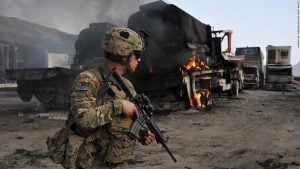
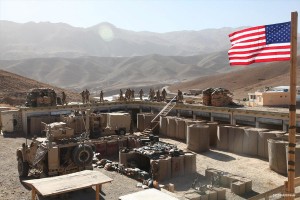


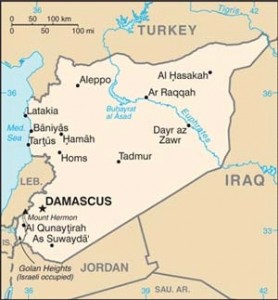




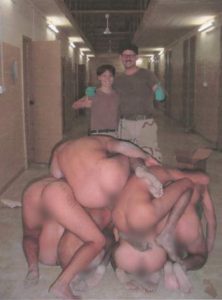

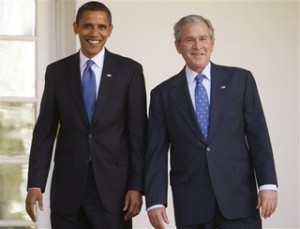









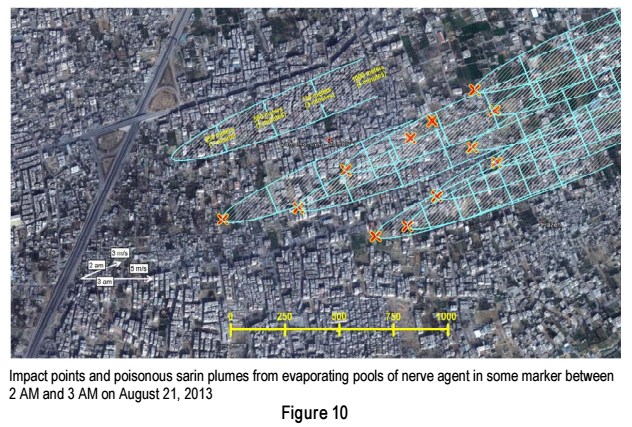
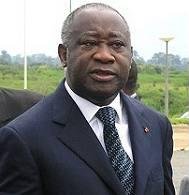

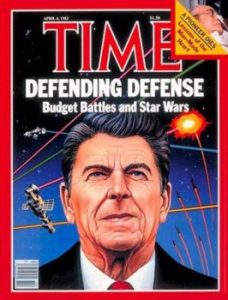

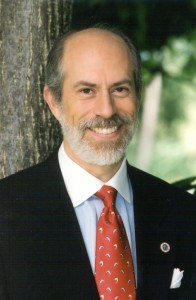

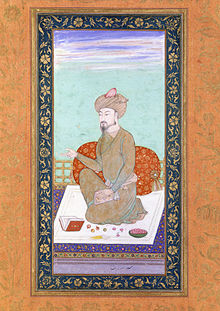



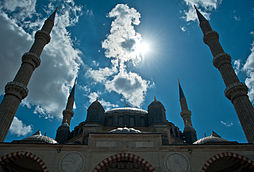
 You can help Global Research make information available to the widest possible readership. Our contributors and correspondents are scattered across the globe in order to report the issues with accuracy and insight.
You can help Global Research make information available to the widest possible readership. Our contributors and correspondents are scattered across the globe in order to report the issues with accuracy and insight. 